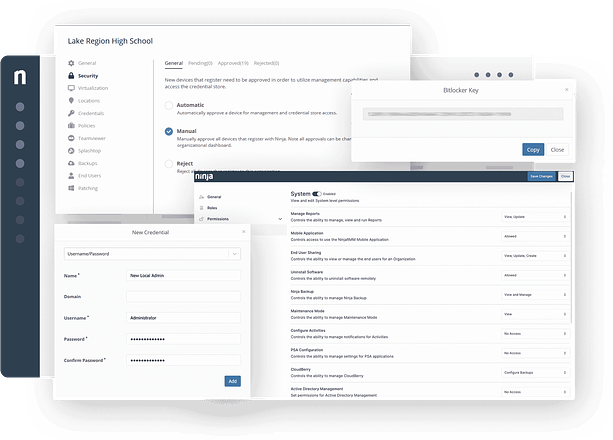Hyper-V Management Software
Monitor and Manage your whole Hyper-V infrastructure with NinjaOne

Monitor and Manage your whole Hyper-V infrastructure with NinjaOne

Monitored and manage host machines and get alerts and logs to anticipate to possible issues.
Monitor and manage VMs, get alerts and logs to anticipate to possible issues, deploy software and patches and much more.
One single console for both: hosts and guest VMs.
Most of the Cyberattacks take advantage of known vulnerabilities. NinjaOne helps to deploy and keep track of OS and third party applications to prevent such cyberattacks.
saved time on manual tasks through automation
replaced 3-4 tools with NinjaOne
Monitor host details like uptime, manufacturer, server type and license.
Monitor host health details like power, battery, hyper-v utilization, cable connections,
temperature, etc.
Monitor and manage Hyper-V VMs, install patches, deploy software, automate, and get alerts for critical health criteria.
Create custom software installation packages – even for multi-step, complex installations – and store them for easy software deployment.
Just install the NinjaOne agent on the target machine and it´s ready to be monitored and managed from the NinjaOne RMM console.
The NinjaOne RMM console can be accessed either from a computer or the NinjaOne App. if you’re not at your desk you can provide emergency support right from your phone.
Remote monitoring and management (RMM) software is a cloud-based platform that allows IT professionals to monitor and manage devices and systems on a network remotely.
RMM software can be used to:
RMM software is most widely used by managed service providers (MSPs). However, it is also becoming increasingly common for internal IT departments to use RMM software. This is because RMM software can help to:
Checking Hyper-V utilization normally requires logging on to the target host and launching the Performance Monitor from the Administrative Tools menu, but with the NinjaOne RMM console, CPU, memory, disk, and network usage is always visible from the Device Overview screen, without the need to launch any applications.
Yes, through PowerShell scripts integrated into NinjaOne’s Remote PowerShell capabilities, you can automate replication monitoring, customize health thresholds, and receive alerts when VM replication is failing or delayed.